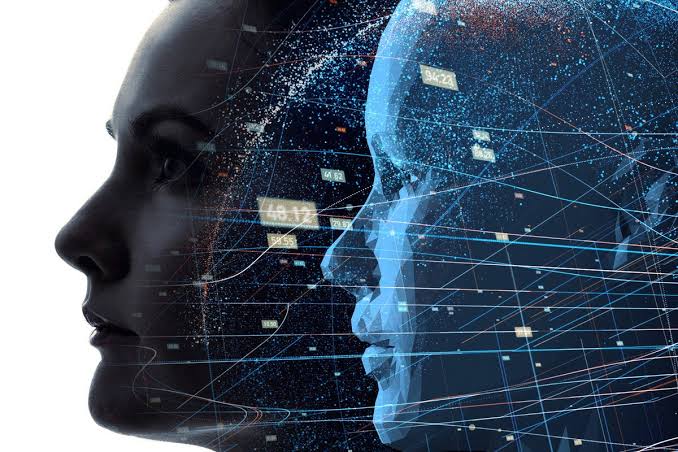With Digital Twin, you can imagine having a virtual replica of a physical object or system that mirrors its behavior, characteristics, and performance in real-time.
This is the power of the digital twin, a technological breakthrough that has been rapidly transforming industries across the globe.
From manufacturing and healthcare to aerospace and smart cities, digital twins are revolutionizing the way we design, develop, and operate various systems.
In this article, we will delve into the world of digital twin technology, explore its impact on industries, discuss applications, highlight challenges, and glimpse into its promising future.
What is a digital twin?
At its core, a digital twin is a virtual representation of a physical entity, be it a product, process, or system.
It captures and simulates its real-time data, enabling analysis, optimization, and prediction.
This technology is not mere static models but dynamic counterparts that continuously update themselves with live data from their physical counterparts.
To achieve this synchronization, digital twins leverage a combination of technologies such as Internet of Things (IoT) sensors, data analytics, artificial intelligence (AI), and machine learning (ML).
These technologies enable the collection, transmission, and analysis of data from various sources, creating an accurate digital replica of the physical object or system.
Impact of digital twin technology
Its Impact is far-reaching, bringing about transformative changes in numerous industries.
One of the most significant benefits is the improvement in productivity and efficiency.
With real-time data and simulations, companies can optimize operations, identify bottlenecks, and make informed decisions to streamline their processes.
This leads to increased output, reduced waste, and better resource management.
Furthermore, this technology play a pivotal role in reducing downtime and maintenance costs.
By monitoring the performance of physical assets and predicting potential issues, organizations can proactively schedule maintenance, replace components, and avoid costly breakdowns.
This not only saves time and money but also increases the lifespan of equipment.
The impact of digital twin technology is not limited to operations and maintenance.
It significantly enhances product development and testing processes.
By creating virtual prototypes and conducting simulations, engineers can identify design flaws, test different scenarios, and optimize performance before physical production begins.
This accelerates the product development lifecycle, reduces the number of physical prototypes needed, and fosters innovation.
Moreover, this technology contribute to increased safety and reliability.
They allow for the analysis of potential risks and failures, enabling organizations to implement preventive measures.
For instance, in the energy sector, digital twins can simulate the behavior of power grids, predicting and mitigating potential outages or blackouts.
This ensures the smooth operation of critical infrastructure and enhances the safety of both employees and the public.
Applications of digital twin technology
This technology finds application across a wide range of industries, driving innovation and efficiency.
In the manufacturing sector, it enables predictive maintenance, optimize supply chains, and facilitate continuous improvement through real-time monitoring and analysis.
In the aerospace and defense industries, it is used to simulate and optimize aircraft performance, enhance maintenance procedures, and ensure the safety of passengers.
They provide valuable insights into aircraft health, enabling proactive maintenance and minimizing the risk of failures.
The healthcare sector has also embraced digital twin technology.
Digital twins of human organs or entire patient systems enable personalized medicine, assisting doctors in making accurate diagnoses and predicting treatment outcomes.
This breakthrough opens new possibilities for improved patient care and medical advancements.
The automotive industry leverages this technology to enhance vehicle design, simulate crash tests, and optimize fuel efficiency.
By creating virtual replicas of vehicles and components, manufacturers can iterate designs rapidly, reduce costs, and deliver safer and more reliable automobiles to the market.
In the realm of smart cities, it plays a crucial role in urban planning, infrastructure management, and public services optimization.
By creating digital representations of city systems, such as transportation networks, energy grids, and waste management systems, city planners can analyze data, simulate scenarios, and make informed decisions for sustainable development.
This technology enables the optimization of traffic flow, energy consumption, and waste management, resulting in smarter, greener, and more livable cities.
Challenges and limitations of digital twin technology
While the potential of this technology is immense, there are challenges and limitations that need to be addressed for its widespread adoption.
Data privacy and security concerns are paramount when dealing with sensitive information collected from physical systems.
Organizations must implement robust cybersecurity measures and ensure that data is encrypted, protected, and accessible only to authorized personnel.
The high cost of implementation and maintenance is another challenge that organizations face.
Creating an accurate digital twin requires substantial investment in IoT sensors, data infrastructure, and analytics capabilities.
Furthermore, maintaining the digital twin’s synchronization with the physical counterpart requires ongoing monitoring and updates.
Despite the initial costs, the long-term benefits and return on investment can outweigh the expenses.
Creating accurate digital twins can be a complex task.
It requires comprehensive data collection, accurate modeling, and continuous calibration.
The accuracy of the digital twin depends on the quality and reliability of the data captured from the physical system.
Additionally, as systems evolve and change, updating and re-calibrating the digital twin becomes necessary to ensure its accuracy and relevance.
Another challenge lies in the need for skilled personnel who can develop, deploy, and manage this technology effectively.
Organizations must invest in training and upskilling their workforce to leverage the full potential of this technology.
Collaboration between industries and researchers can also help address these challenges by sharing best practices, developing standards, and fostering innovation.
Future of digital twin technology
The future of this technology is incredibly promising.
As technology continues to advance, digital twins will become more sophisticated and interconnected.
Advancements in AI, ML, and data analytics will enable more accurate simulations, better predictive capabilities, and enhanced decision-making.
Furthermore, this technology is likely to expand beyond individual objects or systems to encompass entire ecosystems and networks.
For example, in smart cities, digital twins can integrate various city systems to optimize resource allocation, energy usage, and transportation efficiency.
Collaboration between industries and researchers will be crucial in shaping the future of digital twin technology.
By sharing knowledge, best practices, and success stories, organizations can collectively push the boundaries of innovation and unlock new applications across industries.
Conclusion
In conclusion, digital twin technology is revolutionizing industries by providing virtual replicas of physical objects and systems.
Its impact is evident in improved productivity, reduced costs, enhanced product development, and increased safety and reliability.
From manufacturing and aerospace to healthcare and smart cities, digital twins are driving innovation and efficiency.
However, challenges such as data privacy, high costs, accuracy, and the need for skilled personnel must be addressed to fully realize the potential of digital twin technology.
With advancements in technology, software, and collaborative efforts, the future of digital twin technology looks promising, with expanded applications and increased interconnectedness.
To harness the power of digital twin technology, continued research, development, and investment are crucial.
Organizations must embrace this transformative technology and work together to unlock its full potential for a smarter, more efficient, and sustainable future.








